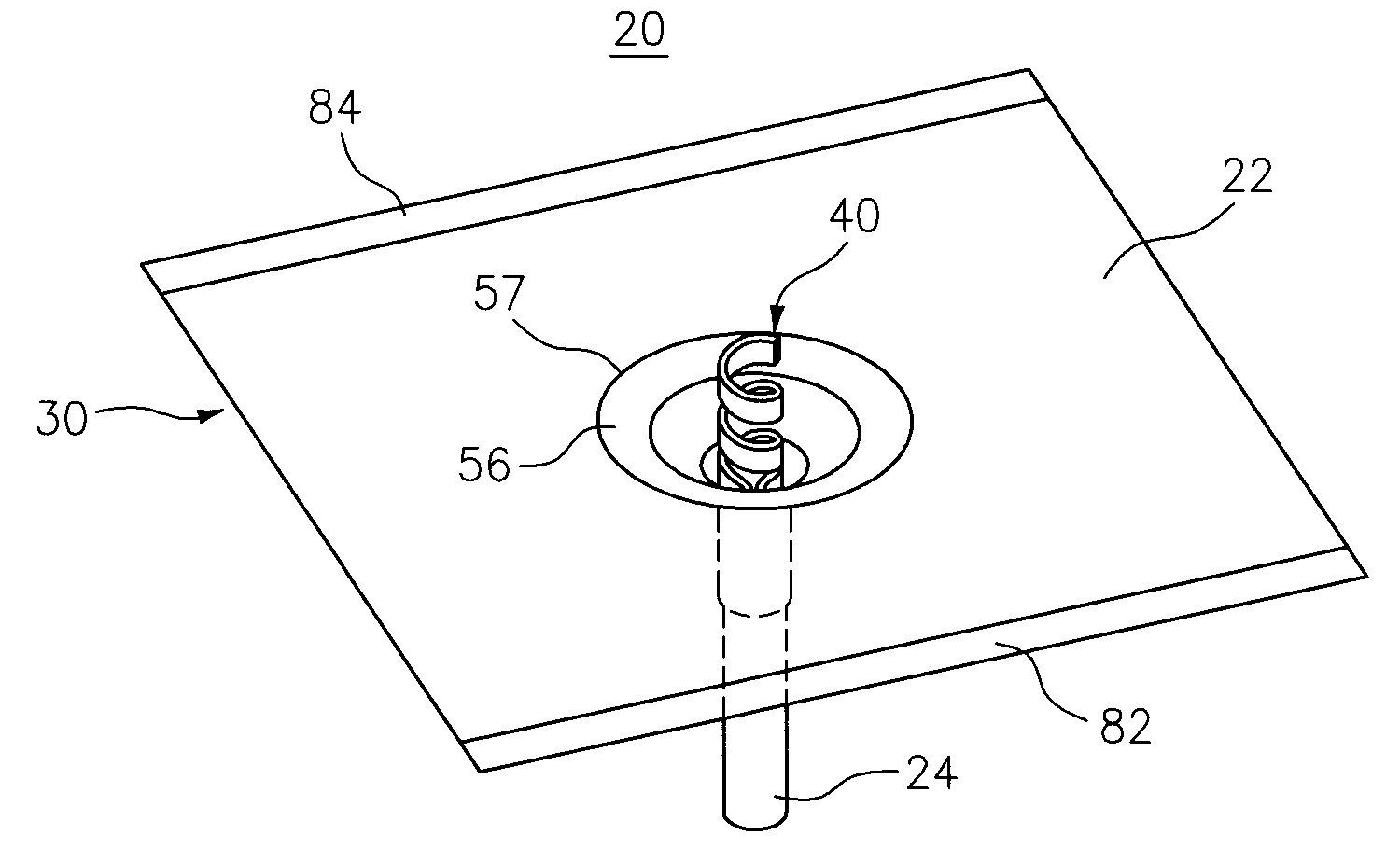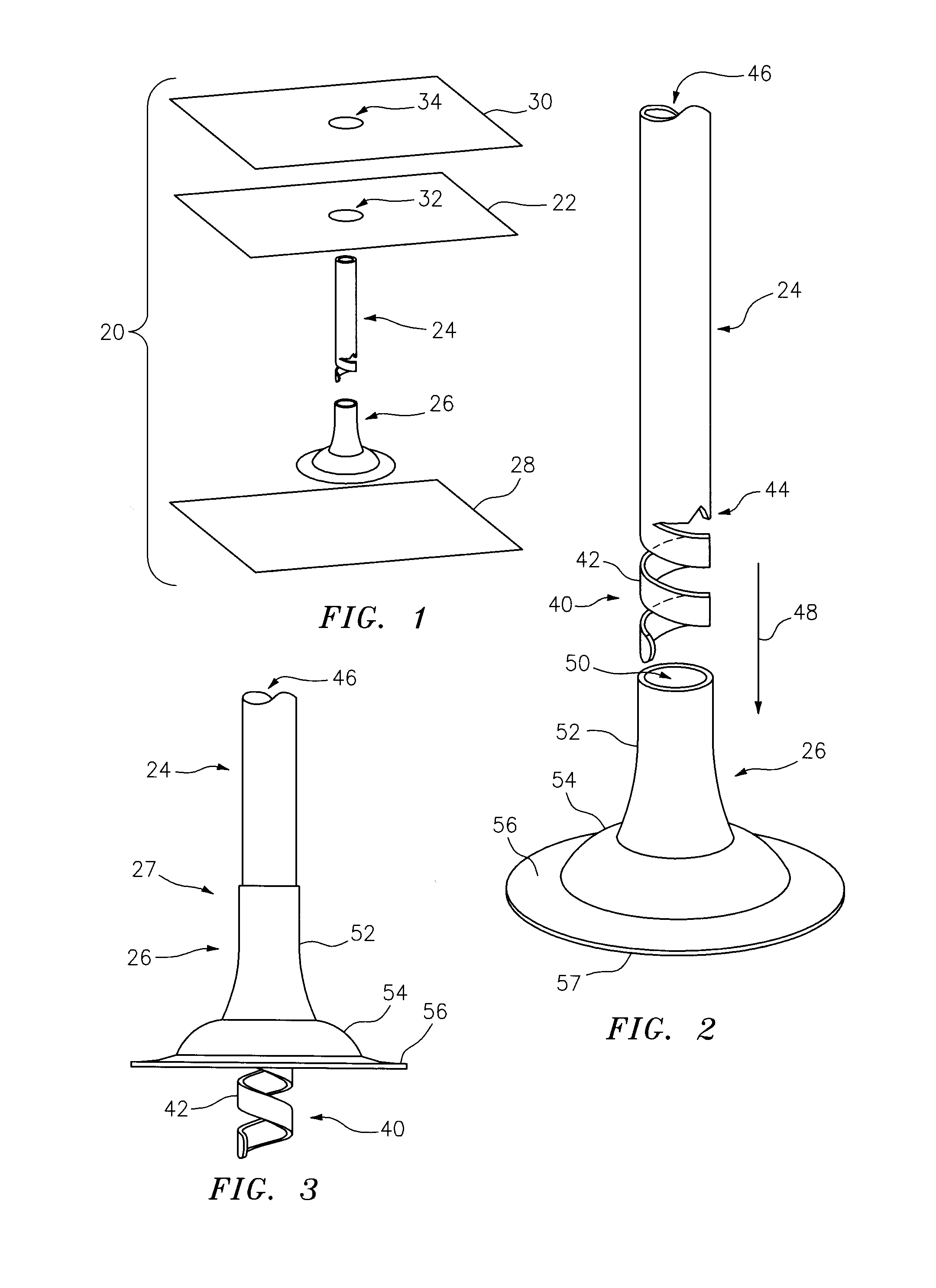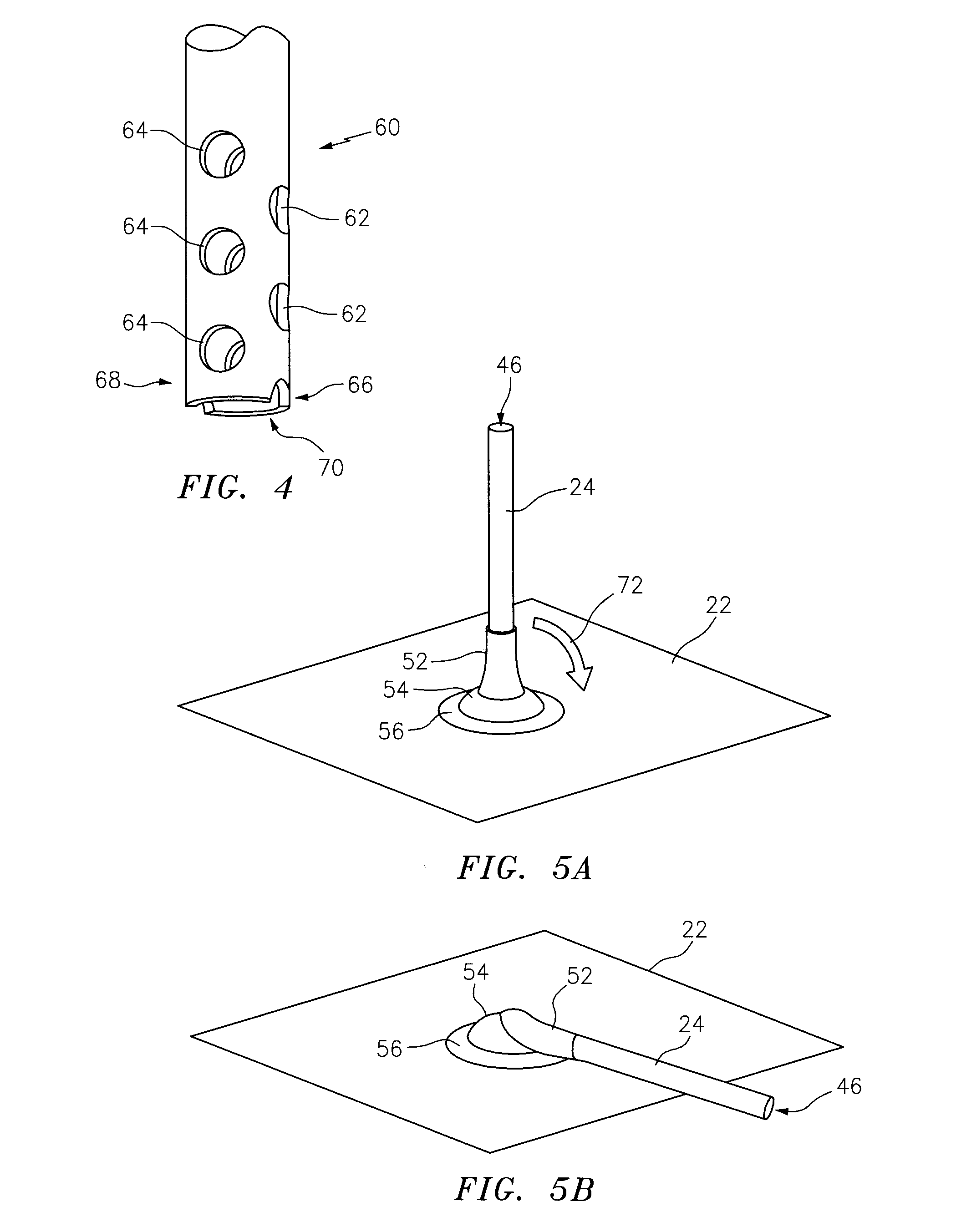This alarmed
leak rate typically includes the combination of both air and liquid, and typically has an upper safety limit of the minimum
blood flow rate possible out of a wound cavity with an actively bleeding
vein or
artery.
In practice, the device proved to be effective; however, one major limitation was detected: the high
electrical grid power source needed to operate the device limited the mobility of a patient.
Batteries increased patient mobility, but time was limited by the life of the batteries between charges.
Additionally, battery management became an issue, especially for facilities with a high number of NPWT patients, and
electrical grid power was still needed to recharge the batteries.
Air leakage into the NPWT
system requires the most power of any other component.
Air leaks are the obstacle to creating a vacuum
system that does not require a continuous external power source or frequent recharging of its internal
power storage.
However, the inherent geometry mismatch of a planar dressing and the contoured
skin surface often leads to air leaks.
The
mechanical devices therefore are only applicable for select, relatively flat surfaces on the body and, even then, it is difficult to eliminate air leaks entirely.
There are various limitations to applying NPWT with existing mechanical, bladder pumps.
There are no pressure gauges on the pumps and, therefore, the user does not know the initial magnitude of the negative pressure pulled, and cannot monitor the pressure during therapy.
The pre-application handling of the dressings alone introduces a probability for air leaks, as the dressing typically folds onto itself or creases very easily due to its low
bending stiffness; many dressings are thinner than a piece of standard paper, and the
bending stiffness of a material is proportional to the inverse of its thickness cubed.
This creates creases, also referred to herein as wrinkles, in the dressing that have a
high potential for causing air leaks into the NPWT system.
This is most common and almost unavoidable at the edges of the dressing due to handling by the caregiver.
This is a critical issue as the edges of the dressing are an area where leak propagation from the edge of the dressing to the wound cavity is potentially very high, based on the theory of interface
fracture mechanics.
Electrical NPWT dressing systems have not readily addressed the
air leak issues listed above that form at the dressing-to-skin interface.
This introduced a
high potential for air leaks, which often alarmed the shut-off system.
Although the Pad does not guarantee
elimination of air leaks at the tube-to-dressing interface, it highly reduces the probable amount of air leaks into the dressing, based on its ergonomic design and small profile.
A minimal amount of air leaks is almost unavoidable for all applications with planar
adhesive components, due to the geometrical mismatch and user handling that still remain.
These materials are often not new to wound dressings; however, they are new to NPWT.
However, it cannot accommodate for geometrical mismatch without creases, especially as the dressing surface area increases.
Since the dressing is stiffer and thicker, these creases are difficult to seal in an air-tight manner, due to its increased
bending stiffness.
Therefore, hydrocolloids are often only applicable to smaller wounds.
The
prefabrication eliminates any potential air leaks at the tube-to-dressing interface due to
user interface and geometrical mismatch, but it is not capable of being moved on the dressing surface.
Therefore, it may need to be placed on an inconvenient area of the wound, such as a location that is uncomfortable for the patient.
Since the dressings are not typically round, the tube path may be required to travel in an undesirable path, in order to cover the
wound area with the preset shape of the drape.
Therefore, as the pump expands, mainly due to air leaks and potentially
exudate removal, the pressure remains relatively constant for the length of the pressure application.
This system is expensive and highly technical when compared to the non-electrical pumps at the low end of the medical pump spectrum (e.g., bladder pumps); however, it is the first commercial mechanical NPWT pump, which has been proven to be a potential NPWT
pump design.
Since air leaks into the dressing system remain highly probable, depending on wound location and caregiver experience, the successful application of the SNaP®
Wound Care System is limited in practice.
 Login to View More
Login to View More 


